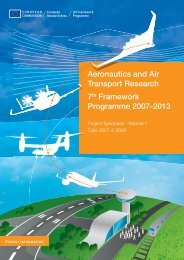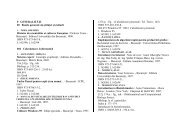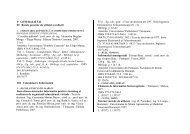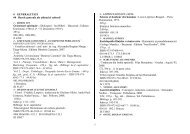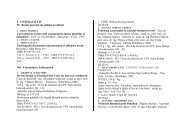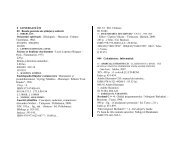You also want an ePaper? Increase the reach of your titles
YUMPU automatically turns print PDFs into web optimized ePapers that Google loves.
Economic regeneration – projects boosted entrepreneurialism<br />
and supported business creation and growth and the (smallscale)<br />
development of industrial sites. Supporting people into<br />
employment was another key aspect of URBAN II measures.<br />
Social regeneration – projects helped to reduce crime, improve<br />
educational performance, improve the skills of local people<br />
and support disadvantaged groups (especially young people)<br />
in various ways.<br />
Social exclusion was a key factor affecting the lives and<br />
opportunities of several key demographic groups in most of<br />
the URBAN II programme areas. Women, younger and older<br />
people, residents from minority ethnic groups, and asylum<br />
seekers and refugees all experienced some form of social<br />
exclusion or disadvantage.<br />
A tool in the fight against exclusion<br />
The ex post evaluation noted that most URBAN programmes<br />
supported projects to tackle unemployment and the lack of<br />
job opportunities. As most target areas had very high<br />
unemployment levels, this primary problem was tackled headon<br />
through investing in projects for training, workforce<br />
development, education and skills enhancement.<br />
Almost half of the programmes supported projects that<br />
addressed crime issues, with a relatively large number of drugrelated<br />
projects and interventions with an emphasis on antisocial<br />
behaviour.<br />
About a third of programmes had projects for capacity building<br />
and strengthening the voluntary and community sector.<br />
Projects supported these organisations to grow and develop<br />
and become more robust and sustainable, so that they could<br />
effectively deliver support for local communities.<br />
Many projects targeted specific groups in deprived communities.<br />
Key groups included women, ethnic minorities and (to a lesser<br />
extent) young people. Projects therefore seemed to prioritise<br />
the hardest to reach in the target communities.<br />
hoW iT WorkS – DorTmUnD<br />
The main challenges were high unemployment (especially<br />
among young people and migrants), poverty and risk of<br />
exclusion, low educational attainment levels, an unbalanced<br />
economy, sub-standard living conditions and a poor external<br />
image. The target area was affected by high population<br />
turnover rates, with more successful residents moving out to<br />
be replaced by more disadvantaged groups.<br />
Most resources were focused on entrepreneurship and<br />
employment (42%) and physical and environmental measures<br />
(33%), with 15% devoted to social inclusion. The main priorities<br />
were creating and preserving jobs; improving the urban fabric<br />
and housing; developing structures for residents in commerce,<br />
housing and culture; and promoting social cohesion.<br />
The programme logic was strong, with close links between<br />
the problems highlighted in the baseline analysis and the<br />
strategy developed. A study of the strengths and weaknesses<br />
of the programme area was supplemented by intensive<br />
consultation with local partners and residents, and helped<br />
to ensure that the programme strongly reflected local needs<br />
and conditions.<br />
panorama 35<br />
13



